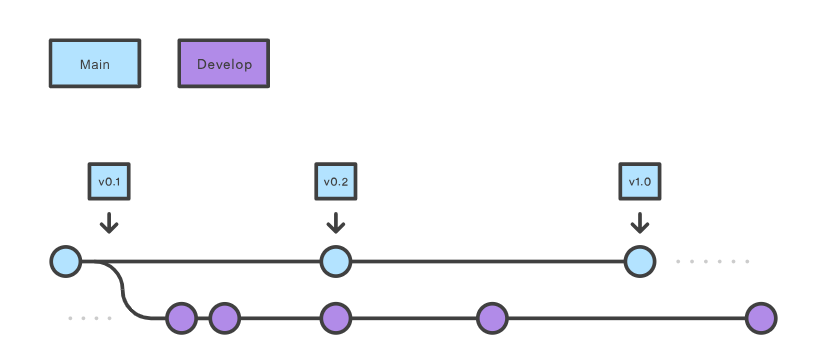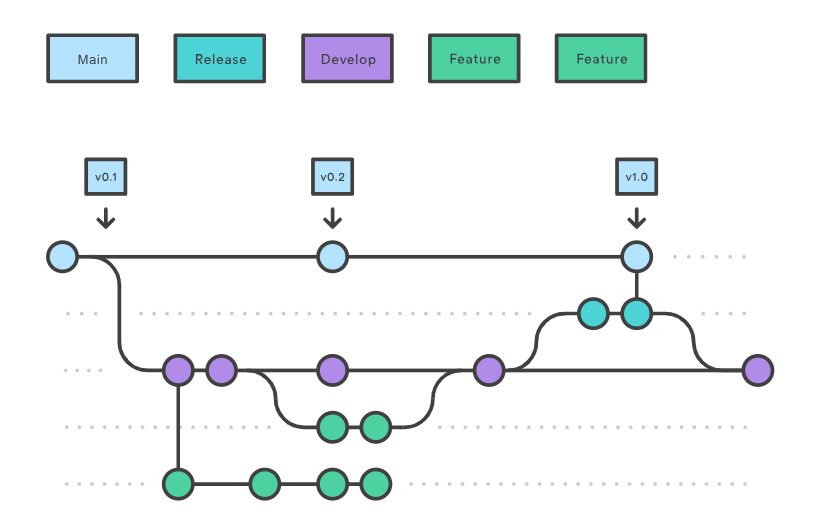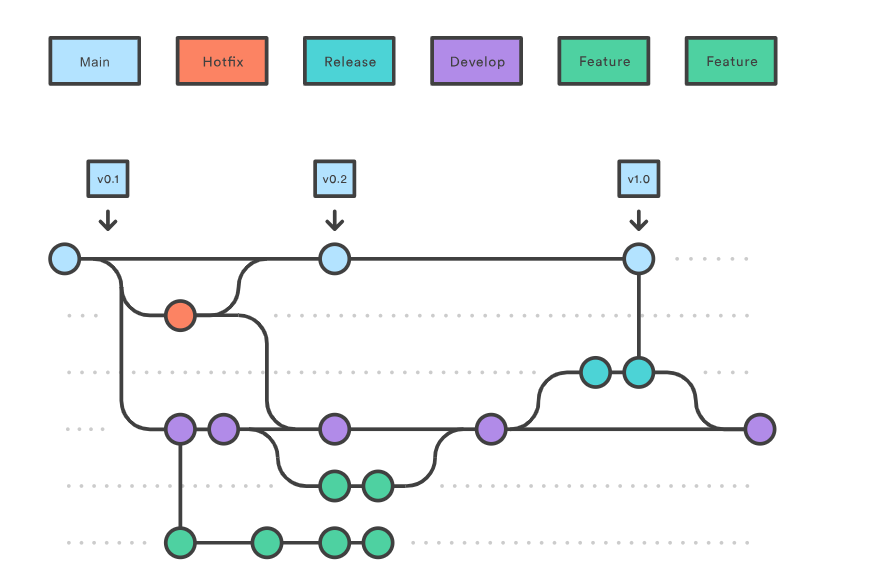Software development on the flatsat
GitFlow Workflow Overview
GitFlow is a branching strategy designed to streamline development, testing, and deployment processes in larger projects. It defines structured branches and workflows for managing features, releases, and urgent fixes in a way that maintains a stable codebase and enables continuous development.
1. Branching Model
GitFlow primarily uses five branch types:
- Main (master): The stable branch reflecting the current production code. Only release and hotfix branches are merged into main, maintaining its stability.
- Develop: This branch holds the latest accepted developments. New features and improvements are merged into develop, which serves as the basis for release branches.
- Feature: Created from develop to work on new features or enhancements. Feature branches are short-lived and must be integrated back into develop after completion.
- Release: Created from develop when preparing for a new release. This branch allows final testing and bug fixes before merging into both main and develop.
- Hotfix: Used for critical fixes that need to be deployed immediately. Hotfix branches are based on main and merged back into both main and develop upon completion.

2. Workflow Process
- Feature Development:
- Start a feature branch from
developusing a clear prefix likefeature/feature-name. - Implement the feature, commit changes, and push the branch if needed.
- Upon completion, merge the feature branch back into
developand delete it.
- Start a feature branch from

- Preparing a Release:
- When
developis stable and ready for a release, create a release branch (e.g.,release/1.0). - Finalize minor adjustments and version updates on the release branch.
- Once testing and fixes are complete, merge it into both
mainanddevelop. Tag this commit for reference.
- When

- Hotfixes:
- Hotfixes are created directly from
mainfor urgent production issues. - After the fix, merge the hotfix branch into both
mainanddevelopto ensure the codebase remains consistent.
- Hotfixes are created directly from

3. Best Practices
To optimize GitFlow usage and maintain a smooth development process, consider the following practices:
- Frequent Commits and Atomic Changes: Make small, focused commits to ease code reviews and bug tracking.
- Clear Branch Naming Conventions: Use prefixes (
feature/,release/,hotfix/) for clarity in identifying branch purposes. - Descriptive Commit Messages: Document each change with a concise message to aid in tracking and debugging.
- Automate Testing and CI/CD: Run automated tests on all branches to catch issues early, ensuring only stable code reaches
main. - Pull Requests for Merges: Use pull requests for merging to ensure code reviews and prevent conflicts.
4. Advantages of GitFlow
- Improved Collaboration: Clearly defined branches reduce merge conflicts and enhance teamwork.
- Stable Main Branch: Maintains production stability, allowing hotfixes without disrupting ongoing development.
- Enhanced Version Control: Organizes commits by type (feature, fix, release), helping trace development progress.
Conclusion
GitFlow is well-suited for projects with scheduled releases, complex development, and continuous deployment needs. By enforcing structure, GitFlow enables teams to maintain a stable production environment while fostering agile development.
For more details on GitFlow and best practices, refer to Atlassian’s GitFlow Tutorial, GitKraken’s Workflow Guide, and Stackademic’s Guide.
